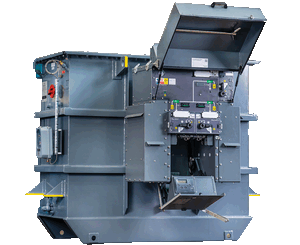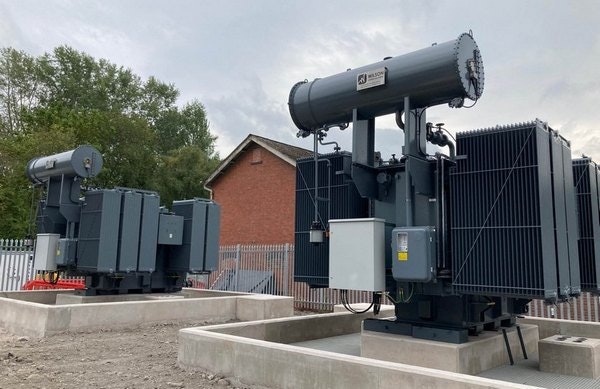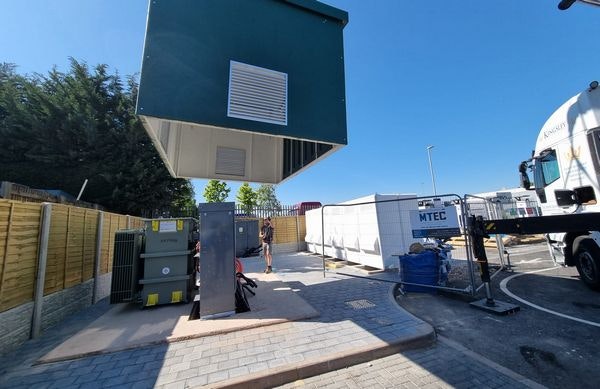Tier 2 Ecodesign compliant
Features & Benefits
Built to DNO specifications
Designed with UKPN, SPEN & SSE specifications
Suitable for DNO, iDNO & ICP applications
Structural support frame for larger LV cabinets
Available as standalone, packaged substations or free issue
Fully customisable options available on request
Competitive lead times
DNO approved Ring Main Units
Schneider Electric & Lucy Electric Fuse and ACB Cabinets
Lucy Electric Sabre Ringmain Units - VRN2a, VRN6a, Lucy Trident RMU
Schneider Electric Ringmaster Ring Main Units and Circuit Breakers – RN2d & RN6d
Product Information & GA Drawings
Select Transformer Rating for Product Info
View full product information including specifications, ancillaries, data sheets and GA Drawings. Please select the power rating of the suitable transformer.
Select Power Rating:
-
Wilson d2 500kVA SSE ONAN GA Drawing
-
Wilson d2 500kVA SPEN ONAN GA Drawing
-
Wilson d2 500kVA UKPN ONAN GA Drawing
-
Wilson d2 500kVA UKPN ONAN Dual Ratio GA Drawing
-
Wilson d2 500kVA UKPN KNAN Dual Ratio GA Drawing
-
Wilson d2 500kVA UKPN ONAN Dual Ratio W/O Mekufa GA Drawing
-
Wilson d2 500kVA UKPN KNAN Dual Ratio W/O Mekufa GA Drawing
-
Wilson d2 500kVA GTC ONAN GA Drawing
-
Wilson d2 500kVA GTC KNAN GA Drawing
-
Wilson d2 800kVA SSE ONAN GA Drawing
-
Wilson d2 800kVA UKPN ONAN GA Drawing
-
Wilson d2 800kVA UKPN ONAN Dual Ratio GA Drawing
-
Wilson d2 800kVA UKPN KNAN Dual Ratio GA Drawing
-
Wilson d2 800kVA UKPN ONAN Dual Ratio W/O Mekufa GA Drawing
-
Wilson d2 800kVA UKPN KNAN Dual Ratio W/O Mekufa GA Drawing
-
Wilson d2 800kVA GTC ONAN GA Drawing
-
Wilson d2 800kVA GTC KNAN GA Drawing
-
Wilson d2 1000kVA SSE ONAN GA Drawing
-
Wilson d2 1000kVA SPEN ONAN GA Drawing
-
Wilson d2 1000kVA UKPN ONAN GA Drawing
-
Wilson d2 1000kVA UKPN KNAN GA Drawing
-
Wilson d2 1000kVA UKPN KNAN W/O Mekufa GA Drawing
-
Wilson d2 1000kVA UKPN ONAN Dual Ratio GA Drawing
-
Wilson d2 1000kVA UKPN KNAN Dual Ratio GA Drawing
-
Wilson d2 1000kVA UKPN ONAN Dual Ratio W/O Mekufa GA Drawing
-
Wilson d2 1000kVA UKPN KNAN Dual Ratio W/O Mekufa GA Drawing
-
Wilson d2 1000kVA GTC ONAN GA Drawing
-
Wilson d2 1000kVA GTC KNAN GA Drawing
-
Wilson d2 1500kVA SEE ONAN GA Drawing
-
Wilson d2 1500kVA UKPN ONAN GA Drawing
-
Wilson d2 1500kVA SEE KNAN GA Drawing
-
Wilson d2 1500kVA UKPN ONAN Dual Ratio GA Drawing
-
Wilson d2 1500kVA UKPN KNAN Dual Ratio GA Drawing
-
Wilson d2 1500kVA UKPN ONAN Dual Ratio W/O Mekufa GA Drawing
-
Wilson d2 1500kVA UKPN KNAN Dual Ratio W/O Mekufa GA Drawing
Ancillaries
Projects
Helping competitive network connections
Related Products

Packaged Substations
MV Switchgear, LV Cabinets and Feeder Pillars
RMUs up to 36kV and ACBs & MCCBs up to 3200A

We're here to help
Get a quote today from our expert team, or if you need further information or additional product details, talk to one of our regional sales managers today.







